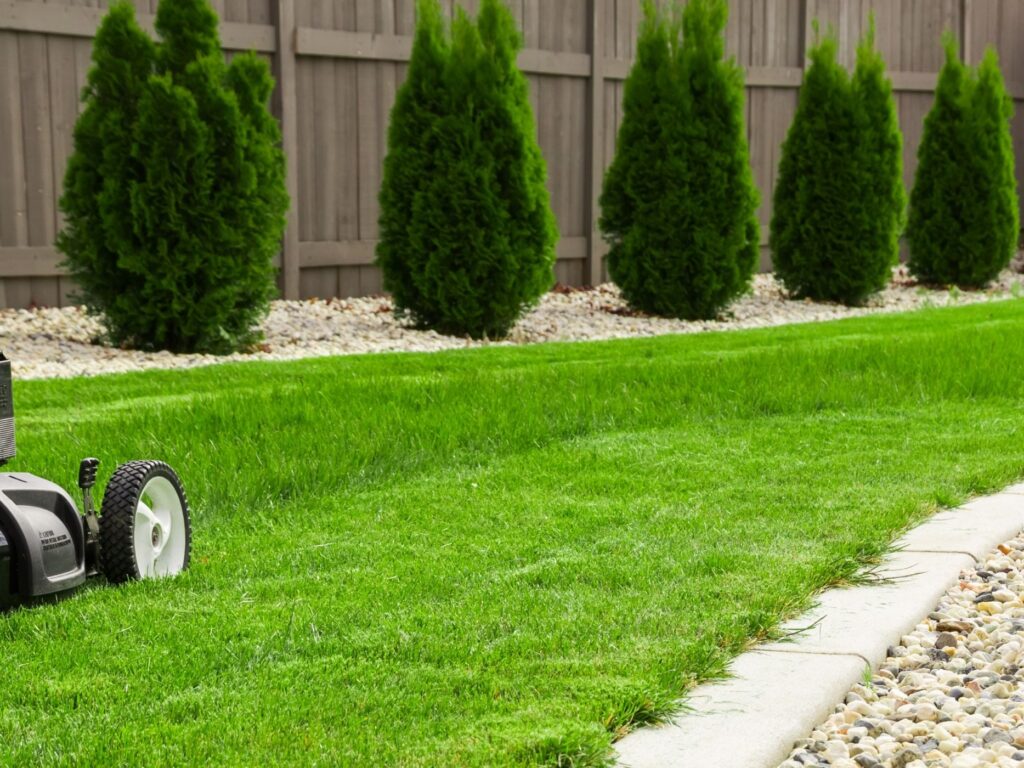Lawn care is often associated with curb appeal, but its impact goes far deeper—literally. Soil health plays a central role in how well grass grows, how water drains, and how resilient a lawn is to environmental stress. Professional lawn care services support these underground systems by managing organic matter, reducing compaction, and encouraging a diverse soil ecosystem. Whether for residential lawns or commercial green spaces, consistent care ensures the ground beneath stays alive, functional, and supportive.
Lawn Care Supports Healthy Soil Structure
The physical structure of soil determines how water flows, roots grow, and nutrients move through the lawn. Regular maintenance directly affects this balance.
Preventing Soil Compaction
Compacted soil limits air and water movement. Grass roots struggle to grow in hard-packed areas, leading to shallow growth and patchy coverage.
- Mowing without pattern rotation compresses soil in repeated paths
- Foot traffic and heavy equipment add pressure to root zones
- Rainfall and irrigation can worsen compaction in poorly drained areas
Scheduled core aeration relieves this pressure by punching holes into the ground, creating space for oxygen and water to circulate. Over time, this encourages deeper root growth and healthier turf.
Encouraging Aggregated Soil Particles
Well-aggregated soil crumbles easily, offering better drainage and root penetration. Regular lawn services often include compost applications or organic treatments that help bind particles in a way that supports growth.
- Compost increases biological bonding between soil particles
- Earthworm activity improves structure and porosity
- Mulched clippings return carbon-rich matter to the topsoil
Organic Matter and Microbial Activity Increase
Healthy soil is biologically active. It contains bacteria, fungi, and invertebrates that break down organic matter and release plant-accessible nutrients. Regular lawn care sustains this ecosystem by balancing inputs and minimizing stressors.
Promoting Microbial Biodiversity
Regular fertilization, mowing, and soil amendments help maintain a stable environment for beneficial organisms.
- Nitrogen-rich treatments support bacterial populations
- Mycorrhizal fungi thrive when roots are undisturbed and soil is balanced
- Organic inputs like humus or compost feed microbial communities
Without proper lawn care, microbial diversity can collapse—especially if synthetic inputs or neglect alter pH, salinity, or moisture consistency.
Organic Inputs Add Nutrients and Texture
Leaving grass clippings in place after mowing or applying compost topdressing replenishes soil carbon and feeds soil organisms.
- Mulching blades on mowers reduce the need for synthetic fertilizers
- Compost adds nitrogen, phosphorus, and micronutrients over time
- These inputs improve moisture retention and reduce erosion
Lawn Care Helps Roots Feed and Stabilize the Soil
Grass root systems do more than support the plant—they regulate temperature, reduce runoff, and protect soil from wind or water erosion.
Deeper Root Growth from Consistent Practices
Routine mowing, watering, and seasonal aeration help turf develop strong, deep roots. Roots extend further in well-maintained lawns because:
- Mowing encourages lateral and downward root growth
- Aerated soil allows oxygen to reach root zones
- Moisture penetrates deeper when surface thatch is managed
Roots also produce natural compounds that feed soil microbes, creating a reciprocal cycle of growth and health.
Soil Stabilization and Erosion Control
Lawns with strong root systems are better at holding soil in place, especially on slopes or high-traffic areas.
- Roots create a physical matrix that resists movement
- Dense turf prevents rain from hitting bare soil directly
- Managed lawns reduce splash erosion and sediment loss
Fertilization and pH Balance Support Nutrient Uptake
Soil health depends not only on structure and biology but also chemical composition. Routine lawn care services monitor and manage these elements over time.
Lawn Fertilization Practices
Fertilizers deliver key nutrients that plants can't always get from native soil. But timing, balance, and application methods are critical.
- Spring and fall feedings promote consistent nutrient availability
- Slow-release formulas reduce nutrient runoff
- Overapplication or imbalance can harm soil microbes and grass alike
pH Level Monitoring
Soil pH affects how nutrients interact and whether roots can absorb them. Regular testing and lime or sulfur treatments help maintain ideal levels (generally between 6.0 and 7.0 for turfgrass).
- Acidic soils limit calcium and magnesium uptake
- Alkaline soils reduce iron and phosphorus availability
- Balanced pH supports microbial health and nutrient cycling
|
Lawn Care Practice |
Soil Benefit |
Frequency Recommended |
|---|---|---|
|
Core aeration |
Improves drainage and oxygen flow |
1–2 times per year |
|
Mulching or composting |
Adds organic matter and supports microbes |
Monthly or seasonally |
|
Fertilization |
Supplies essential nutrients for turf growth |
2–4 times per year |
|
Soil pH testing |
Ensures proper nutrient absorption |
Annually or bi-annually |
|
Mowing at proper height |
Reduces stress on turf and root systems |
Weekly during growing season |
Lawn Services Reduce Weeds That Disrupt Soil
Weeds aren't just an aesthetic issue. They alter soil chemistry, crowd out beneficial grasses, and contribute to long-term imbalance.
Weed Prevention Reduces Root Disruption
When broadleaf or invasive weeds dominate a lawn, they often disrupt the microbial and nutrient balance in the soil.
- Some weeds release allelopathic chemicals that hinder grass growth
- Others have deep taproots that outcompete turf for water and nutrients
- Manual or chemical control helps maintain native balance
Thick Turf Prevents Weed Invasion
Proper mowing height, feeding schedules, and irrigation routines create dense turf that naturally suppresses weed growth. This reduces the need for chemical herbicides and supports long-term soil health.
Conclusion
Regular lawn care goes beyond appearance. It strengthens the soil by maintaining structure, boosting biological life, and regulating nutrient availability. Soil that is compacted, imbalanced, or biologically inactive cannot support healthy turf or long-term landscape resilience.
For both homeowners and property managers, A professional lawn and landscaping contractor provides aeration, mowing, composting, and fertilization to protect the unseen foundation of the lawn: the soil. When lawns receive regular care, they build stronger root systems, encourage microbial growth, and resist erosion. The result is not only a greener yard but a healthier, more functional outdoor environment.
FAQs
How does aeration improve soil health? Aeration relieves compaction, increases oxygen flow to the root zone, and improves water infiltration. This helps roots grow deeper and supports microbial life.
Do grass clippings help or harm the soil? Grass clippings, when finely mulched, decompose quickly and return nitrogen and organic matter to the soil. This reduces the need for chemical fertilizers.
Can fertilization damage soil over time? Overuse or improper application of fertilizers can lead to nutrient imbalances, salt buildup, and microbial disruption. Professional scheduling and slow-release options reduce this risk.
What's the best way to improve microbial life in soil? Adding compost, using organic treatments, and avoiding overwatering all support microbial biodiversity. Avoid harsh chemical applications that may harm beneficial organisms.
Why does mowing height matter for soil health? Taller grass shades soil, reduces moisture loss, and encourages deeper root systems. This protects soil from erosion and supports nutrient cycling.
Reviewer: Sophie Williams looked over this post and brought 7 years of field experience to her suggestions, helping ensure the content stays relevant to business owners and practical for everyday use.









